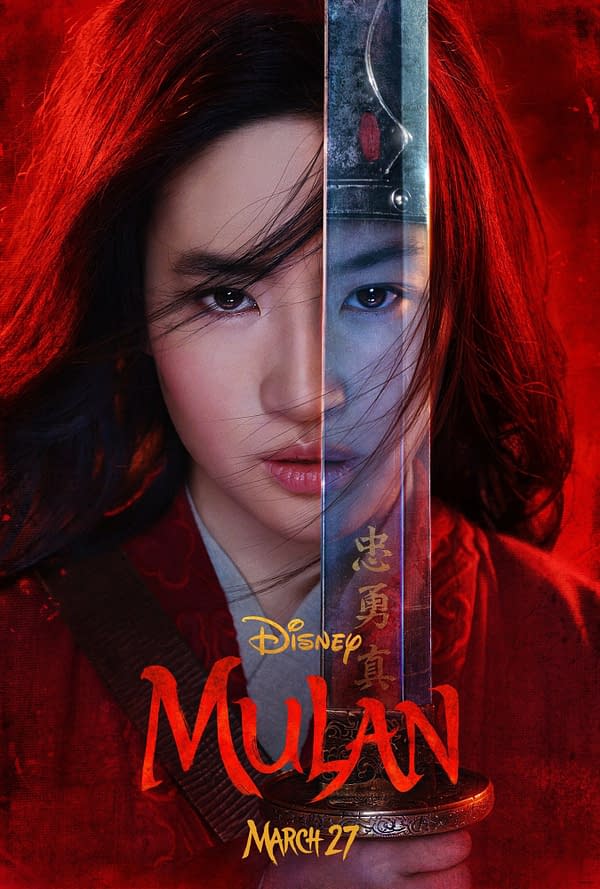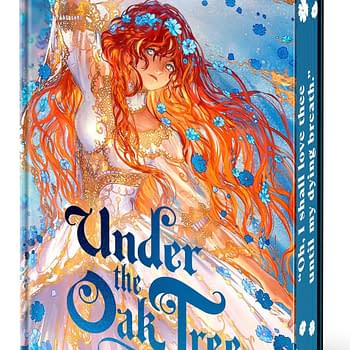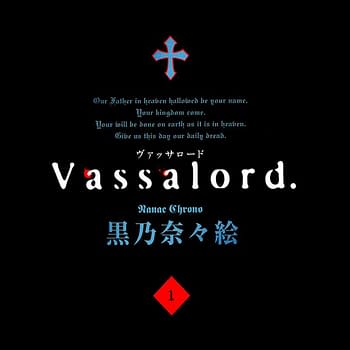Posted in: Disney, Movies | Tagged: disney, hua mulan, jingle ma, lady general hua mulan, movies, mulan, mulan joins the army, the ballad of mulan
The Many Different Versions of Mulan
Disney's new live-action Mulan movie is a Girl Power fantasy for kids. It isn't the only version out there. Hua Mulan has been a mythical figure in Chinese folklore for over a thousand years, a loyal woman who disguises herself as a man to fight in a war in her ailing father's place, Mulan is a contradictory celebration of Confucian principles that keep women down, and she has to defy the Patriarchy in order to preserve it and keep her father alive. She has been held as a symbol of perfect Chinese femininity, "fierce and filial," and loyal to Confucian principles.

Hua Mulan as Legend and Fiction
There's some debate over whether Mulan actually existed. She's most likely an amalgamation of several women who went to war in different battles and dynastic periods. One of the earliest versions suggests she wasn't even Chinese but possible a Mongolian woman in men's clothing who rode a camel and saving a Khan. Her story was only co-opted by the Chinese later. Many people wanted her to have been real, and there are contradictory claims, none provable, for her birthplace. She's best known in the short poem The Ballad of Mulan, which was composed around 400 A.D. in Northern Wei.
That poem is still taught to Chinese school children and is minimalist and simple: Hu Mulan disguises herself as a man to fight in a war so her elderly, ailing father, wouldn't have. When the war is over, she returns home and puts on a dress again to live out her life. That's the core of the story that never changed, no matter how many subplots or other details writers throughout history have added to it in each new version.
The Different Adventures of Mulan
The poem was passed down orally, and it wasn't until the Tang Dynasty (618-907 A.D.) that it was finally written down and elaborated upon. Virtually every subsequent version of the Mulan story has been revised to add patriotic elements and whatever attitudes were prevalent at the time. The Tang Dynasty saw the Song of Mulan as the first written version of the story. New versions continue through the Yuan Dynasty (1271-1368 A.D), the Ming Dynasty (1368-1644 A.D.), and, most recently, the Qing Dynasty (1644-1912).
During the Tang and Yang Dynasty, there were at least two versions that ended tragically. In one, the emperor, upon discovering that Mulan was a woman at the end of the war, tries to force her to marry him so he could possess her. Mulan commits suicide to escape her fate. In another, the emperor accuses Mulan of plotting to usurp his throne in peacetime, and she commits suicide to prove her loyalty to the nation.
It was during the Qing Dynasty that the versions of the story, as we know, were written. In at least two novels – and it's safe by now to just treat Mulan as a fictional character that authors use as a vessel for their themes – the plot gets more complex and elaborate. In one version, there is actually magic and mysticism. Mulan is shown sneaking into enemy territory on spying missions by "disguising" herself as a woman. She even develops an alliance with a princess on the opposing side to bring the war to an end. These elements ended up in the most recent movies.
Mulan at the Movies
The first talkie movie about Mulan premiered in China in 1939. There had been two silent versions in 1927 and 1928, but this one is considered a classic. Mulan Joins the Army was a piece of Chinese propaganda encouraging men to join the fight against foreign invaders, which in real life meant the Japanese. Mulan is shown in conflict with corrupt officials who were collaborating with the invaders, a clear reference to Chinese officials who wanted to appease the Japanese. This was also the first time a love interest was given to Mulan in the form of a fellow general she falls in love with. Leave it to the movies to insist on a love interest in the story of Mulan.
The next movie was the Shaw Brothers' 1964 Chinese Opera version Lady General Hua Mulan, which served as a lavish, all-singing call for unity in Hong Kong during a time when labour protests and civil unrest created an air of anxiety in the then-British colony.
Disney's 1998 cartoon introduced American individualism and feminism to the story along with Mushu, the magic dragon, and slapstick comedy. Again, it came with Mulan's romantic subplot.
The 2009 movie from China, Mulan: Rise of a Warrior (US title), helmed by Hong Kong director Jingle Ma, took from the Qing Dynasty stories and introduced more politics to the story with Mulan forging an alliance with the Mongol princess to end the war. It also had her agree to let her love interest marry the princess to forge an alliance between China and the Mongols to ensure no more war. Mulan gives up love for the good of the country in a patriotic message as befits a movie from China.
Disney's 2020 live-action version pushes the individualism and feminism even further for young girls in the West. It reintroduces magic in the form of Gong Li's sorceress villainess Xianniang as Mulan's Jungian shadow double that she has to defeat. "Xianniang" means "divine maiden" or "goddess maiden" or "sorceress" in Chinese, so the character doesn't even have a name, just a designation. This movie takes the biggest liberty by having Mulan expose her feminine identity on the battlefield during the climax of the movie (this isn't a spoiler – it's in all the trailers!). It's depicted as a moment of empowerment and catharsis that defies every previous version of the story that's more Western than Chinese in its insistence on Individualism and Female Empowerment, but that's the prerogative of the storytellers. Disney is an American company pushing American values, after all, in the guise of Chinese historical clothing this time. Yet Mulan remains the same at her core. It doesn't abandon the Confucian patriarchal values of the original ballad. That's how ironclad her story is, no matter what.














